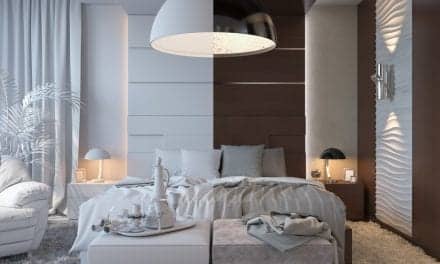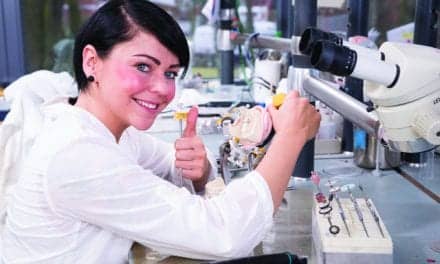Specific phenotypes exhibit benefit from increased VDO.
By Sree Roy
When determining the most efficacious settings for oral appliances for obstructive sleep apnea (OSA), many dental sleep medicine practitioners rely only on mandibular protrusion. But adjusting the vertical dimension of occlusion (VDO)—the distance between the upper and lower teeth imposed by the oral appliance (OA) with the jaw closed and stationary—could be preferable in specific scenarios.
Daniel Levendowski, MBA, and co-investigators recently identified two phenotypes that exhibit benefit from increased VDO: females with normal sized tongues (VDO: 2.5 mm versus 5.5 mm) and males with large tongues (VDO: 5 mm versus 8 mm). “The addition of 1.5 mm of VDO in males with normal sized tongues (5 mm versus 6.5 mm) impacted outcomes to a lesser degree,” Levendowski says. “We also found that females with large tongues were relatively poor responders to OA therapy, independent of VDO (2.5 mm versus 6.5 mm).”
The study was an outgrowth of a $1.15 million NIH Small Business Innovation Research award to investigate methods that improve oral appliance outcomes. The American Academy of Dental Sleep Medicine (AADSM) awarded it a Clinical Research Award for 2020 and published it in the April 2020 edition of the Journal of Dental Sleep Medicine.
Scalloping was a proxy for tongue size, as the tongue imprints result from large fat deposits squeezing against the teeth. “We demonstrated that increasing the VDO was preferable to exclusive reliance on mandible protrusion to create the necessary space for large tongues in the oral cavity,” Levendowski says.
The study was part of a pilot cost-containment program whereby reimbursement for a custom oral appliance was only authorized for patients who exhibited a therapeutic response to a trial oral appliance (ApneaGuard, for which Levendowski has a conflict-of-interest as he is president and co-founder of maker Advanced Brain Monitoring).
The trial oral appliance was designed so jaw forward protrusion was maintained throughout the night versus the custom appliance, in which vertical mouth opening was not controlled. “Many custom appliances are designed to allow the patient to open his/her mouth with the OA in situ. This can compromise the positioning of the jaw when sleeping supine and/or during rapid eye movement sleep,” Levendowski says. The study found that controlling vertical mouth opening—which can be done with orthodontic elastics for custom oral appliances—contributes to improved outcomes.
Sree Roy is editor of Sleep Review.
Reference
Levendowski D, Clark SJ, Odom W, et al. The influence of sex, tongue size and sleeping position on oral appliance therapy outcomes. JDSM. 10 Apr 2020;7.2: Abstract #021.





